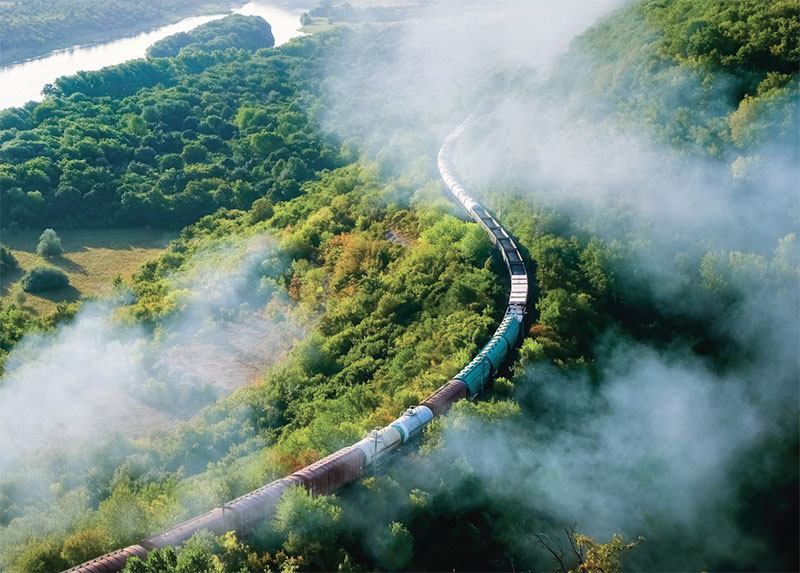Indian Railway has developed its own Indigenous Automatic Train Protection (ATP) Systems for enhancing safety of running trains. The system is known as Kavach (TCAS: Train Collision Avoidance system). Kavach will not only aid Loco Pilot to avoid Signal Passing At Danger (SPAD) and over speeding but also help in train running during inclement weather such as dense fog. Development of Kavach Kavach has been developed indigenously by RDSO in association with three Indian Vendors. After a conceptual field trial in October 2012, a developmental project was under taken on Lingamapalli – Vikarabad – Wadi and Vikarabad – Bidar section (Total 250 km) of South Central Railway (SCR) in December 2013. The first field trials on the passenger trains were started in February 2016 and based on the experience so gained the Kavach specifications initial version was finalized in May 2017. Subsequently the Independent safety assessment of the system by a 3rd party (Independent safety Assessor: ISA) was conducted and based on the developmental project, and the safety assessment by ISA, three firms were approved by RDSO in 2018-19 for 110 kmph in Absolute Block working. Subsequently, based on further trials Kavach has been approved for speeds up to 160 kmph and Automatic Block Signalling also in 2020-21. Indian Railways is pursuing development of more suppliers in this technology. Salient Features The technology Kavach works on the principle of continuous update of Movement Authority through radio. The salient features of Kavach are as follows: Kavach controls speed of the train by automatic application of brakes in case Loco Pilot fails to do so. The line side Signal Aspects are repeated in cab which is very useful for higher speeds & foggy weather. For this, Kavach is interfaced with existing signal interlocking systems. Kavach works on principle of continuous update of Movement authority by using radio communication which presently is in UHF range. Kavach can be interfaced with exising signaling Interlocking, including Relay based Interlocking. KAVACH conforms to SIL-4 (Safety Integrity Level – 4) which is the highest level of safety certification. Kavach also includes non-Signalling based additional feature for collision prevention which are non- SIL. Kavach has been approved for speeds up to 160 kmph and Automatic Block Signalling also in 2020-21. Indian Railways is pursuing development of more suppliers in this technology Adoption as National ATP In the spirit of vision of Atam Nirbhar Bharat, Kavach has been adopted as Indian Railway’s National Automatic Train Protection (ATP). Progress of Kavach on IR – In addition to trial section of 250km, at present Kavach is under implementation on 1200 Route km of South Central Railway, on Bidar – Parli Vaijnath -Parbhani and Manmad – Parbhani – Nanded – Secunderabad – Gadwal – Dhone – Guntakal sections. Further, works of Kavach for nearly 36704 Route KM on High Density Network (HDN) / Highly Utilized Network (HUN) routes have been included in Works Programme of 2020-21 & 2021-22. Current Status So far, Kavach has been deployed on over 1098 Route Kms and 65 locos in on- going projects of South Central Railway. Further Kavach is planned to be implemented on Delhi – Mumbai & Delhi – Howrah corridors ( Having a total Route Km of around 3000 Km) as a part of “Mission Raftar” project for raising of speeds to 160 kmph. Tenders for these works have been invited. TCAS – Schematic Arrangement and Basic Components Basic Components of Kavach: The basic components of Kavach include: Stationary TCAS (Train collision Avoidance System) Equipment: This equipment is an Electronic interface to interface with existing Signal Interlocking. Loco TCAS Equipment: This equipment is On – Board equipment which also interfaces with the Loco Pilot. On Track RFID Tags, which are read by the Loco TCAS, for identification of train location. Continuous UHF based communication in between Station TCAS and Loco TCAS. Road Map Ahead: In order to make Kavach a world class ATP (Automatic Train Protection) system, Indian Railways is constantly engaged in improving the system by incorporating additional features: Direct interface with interloking. Functionality of “Temporary speed restrictions”. Interface with other ATP systems. Development of Kavach on LTE. More Indian firms are in process of developing Kavach









